Im Blanky by Studio NMinusOne and Rodolphe el-Khoury
This blanket is embroidered with tiny sensors so it can watch you sleeping.
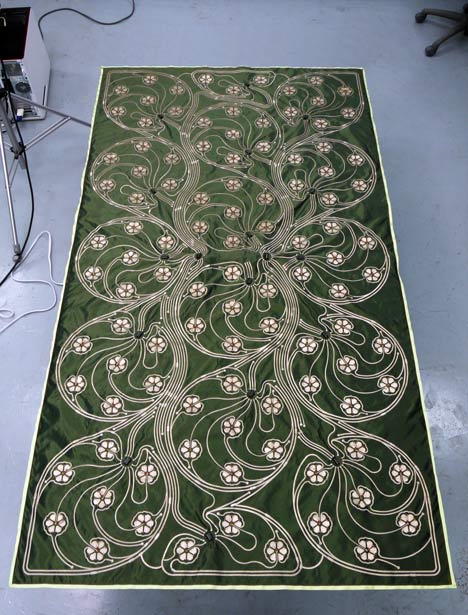
Called Im Blanky, it maps the positions of 104 tilt sensors arranged in hexagons across its surface, which communicate changes in resistance to a controller that's stitched to the back of the blanket, which in turn sends the data wirelessly to a computer that digitally recreates the shape of the whole surface (see movie above).
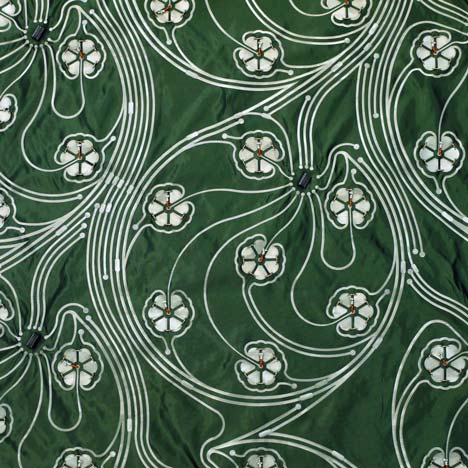
It was developed in the RAD laboratory at the University of Toronto by Studio NMinusOne and Rodolphe el-Khoury, who say that possible applications could include monitoring those with sleep disorders or watching the vital signs of elderly patients who aren't being cared for in hospitals.
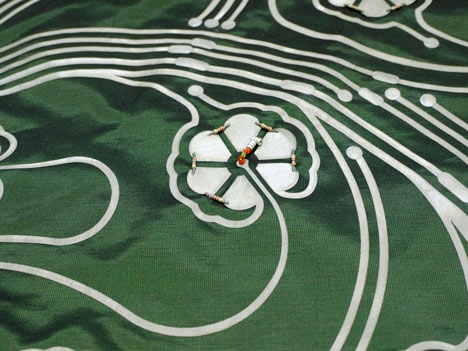
As part of a future where more and more devices are wirelessly connected, it could automatically turn down your central heating or open a window to maintain comfortable sleeping conditions.
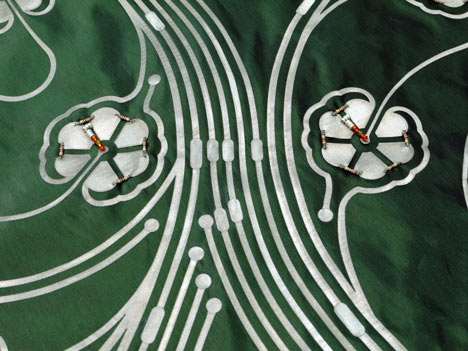
Embroidered in swirling floral patterns on green taffeta, the blanket was commissioned by WORKShop Toronto for an exhibition called Stitches that asked participants to marry traditional embroidery and stitching with new technologies.
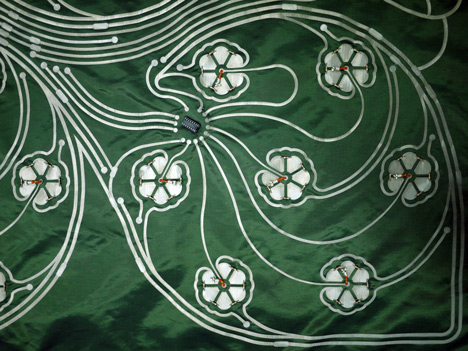
Read more about how information technology is creeping into everyday objects, turning them into devices and apps that monitor our behaviour and communicate with each other, in our special report for Intel here.
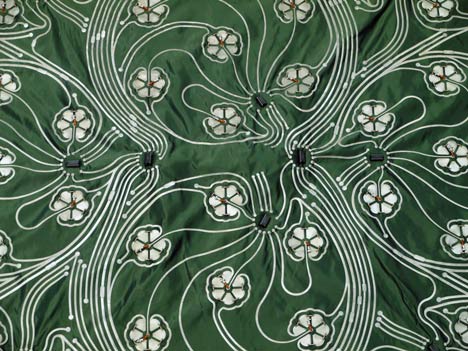
Here's some more information from Studio NMinusOne and Rodolphe el-Khoury:
IM BLANKY is a blanket with an IP address. The basic v. 1.0 is self-modeling, which means that it is wirelessly linked to a digital model that registers and represents its changing state in real time. The built-in capacity to situate and represent itself in space and time points to a most primitive and essential form of cognition, the sense of one’s own body. This ability constitutes a foundation for multiple additional functionalities that would be enabled with the use of other sensing devices in future generations of IM BLANKY.
Soft tilt sensors arrayed in a hexagrid pattern and sewn into the fabric of the blanket enable the digital self-modeling. The data they generate—variation in current resistance—establishes the vectors from which the shape of the entire blanket is computationally extrapolated.
The electronic components and their circuits constitute figurative patterns. The organization of flows and connections here reproduces the logic of nature in generating intricate and hierarchical forms: stems, flowers and petals are the decorative by-product as much as the motivated form of a functional circuit.
IM BLANKY was commissioned by WORKShop Toronto for “Stitches,” an exhibition that invited artists and designers to project traditional embroidery and stitching practices into the 21st century. IM BLANKY aligns ornamental craft with digital electronics and computation to invest the intelligence and knowledge built into traditional materials and forms with a renewed purpose and relevance in increasingly networked environments.
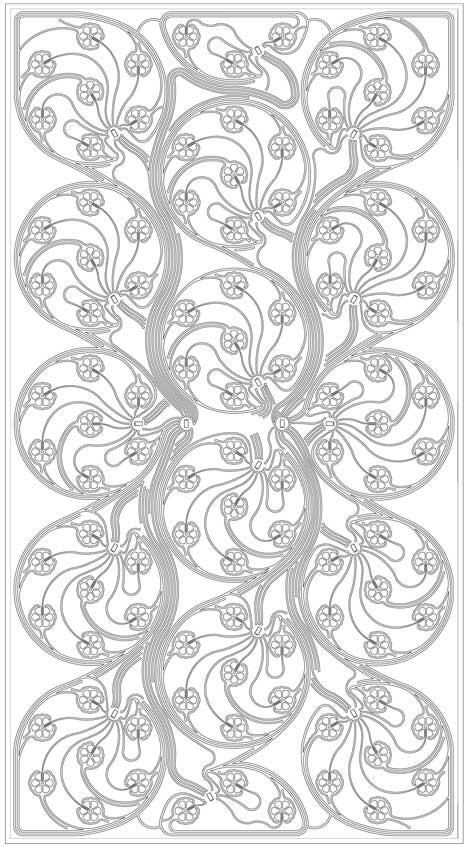
(soft) Hardware:
The blanket measures 7’7” x 4’2” and comprises 104 tilt sensors. They are arrayed in a hexa-grid formation and distributed uniformly over its entire field. The flower-like sensors consist of 6 conductive petal-like pads, radiating from a conductive tassel attached to a powered double-arabesque of conductive wire. The resistance in the current flowing through petal and tassel varies depending on which petal is in contact with the tassel (The R value thus indexes the direction of the tassel). The flowers are arranged in 16 clusters and their stems connected to computational node (Multiplexer). The nodes communicate the fluctuation in current resistance recorded at each flower to a microcontroller stitched to the back of the blanket (Arduino Lillypad). The data is communicated wirelessly to a computer (XBee Shield)
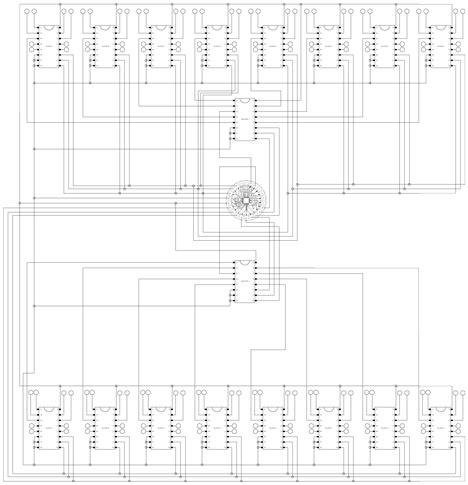
Software:
Each flower occupies a hexagonal cell, surrounded by six neighbors. The computation script extrapolates directional vectors from current resistance data and models a slope based on the orientation of that of that cell in relation to that of its immediate 6 neighbors. The algorithm generates a field of peaks and valleys that is fine-tuned into a smooth polygonal mesh by negotiating local conditions at each cluster within the behavior parameters of the overall figure (Processing).
The research for this project was conducted at RAD, a laboratory of embedded and situated technology at the Daniels Faculty, University of Toronto
Credits:
Studio NMinusOne in collaboration with Rodolphe el-Khoury
Principals in Charge at Studio NMinusOne: Christos Marcopoulos and Carol Moukheiber
Fabrication Team: Valentina Mele, Sebastian Savone, Yie Ping See
Programming: Jonah Ross Marrs, Samar Sabie, Dina Sabie